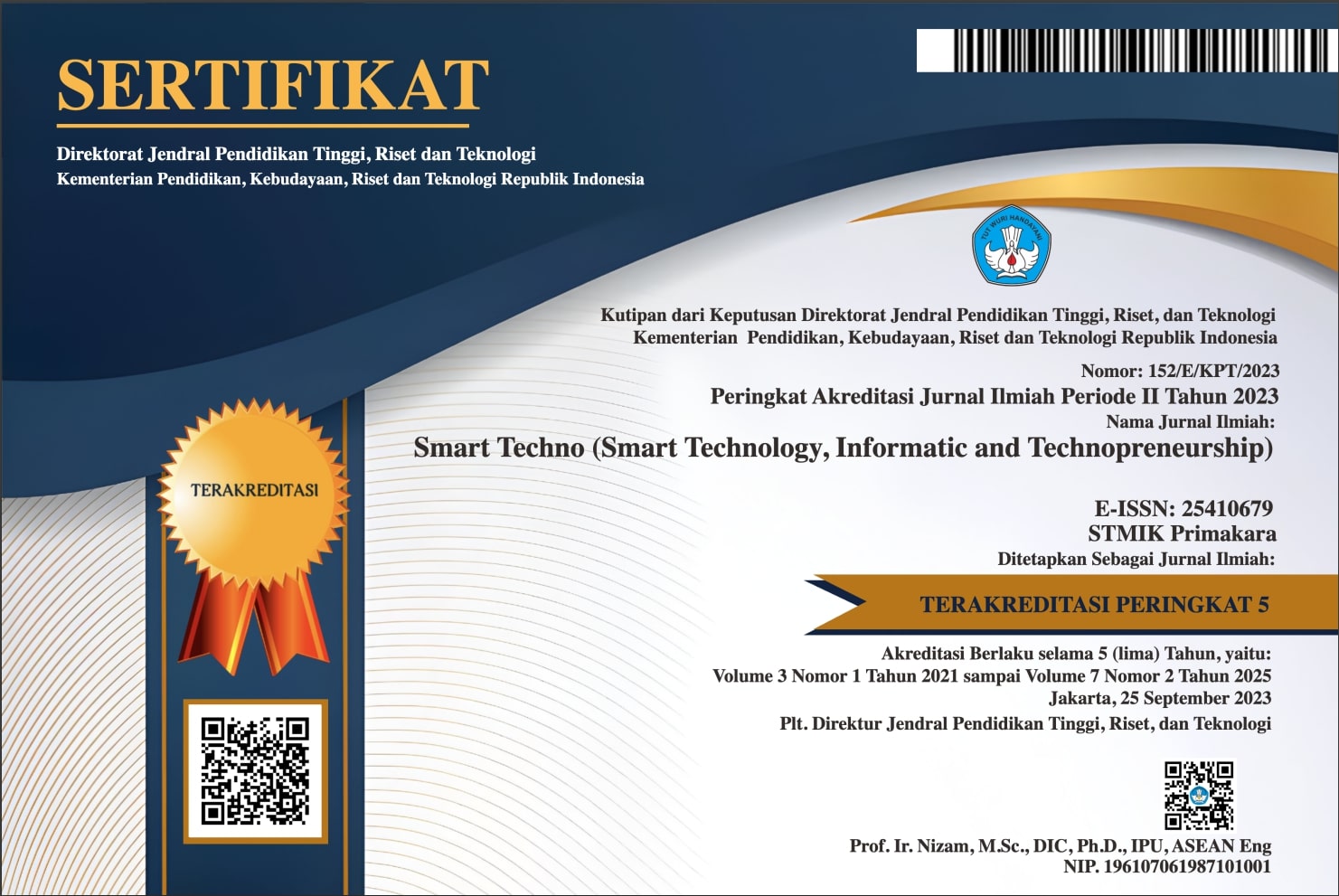Sistem Informasi Usulan Dan Rekapitulasi Usulan Anggaran Serta Laporan Realisasi Dana Desa (Sireda) Berbasis Web Responsive Pada Desa Mekar Bhuwana, Kecamatan Abiansemal, Kabupaten Badung
Abstract
Village Funds (DD) are funds sourced from the State Revenue and Expenditure Budget which is intended for the Village. Transferred through the Regency / City Regional Revenue and Expenditure Budget, which is used to finance governance, development, community development and community empowerment. The budget allocation for village funds is a serious concern because the funds obtained by each village are quite large, which is almost one billion rupiah. These funds must always be reported to the community so that there is no decrease in community trust in the village apparatus. Village funds with a large enough nominal are vulnerable to abuse by village officials who do not have a nationalist and irresponsible sense. The Mekar Bhuwana Village Office still uses conventional methods in the budgeting process to the reporting of the village budget, so that many of the archive proposals are lost because they are still in the form of hardcopy. Therefore we need a system that can handle the process of submitting village funds and the realization of village funds that have been submitted. This system was developed with the waterfall method where data is obtained directly from Mekar Bhuwana Village, system analysis and design using Data Flow Diagrams and Entity Relationship Diagrams with system creation software using PHP programming language with laravel framework and MySQL database. The results of the research are that the system can work well to handle the process of proposing and realizing village funds.
Downloads
References
L. Nuraini, M. H. Setyobakti, and N. T. Indrianasari, “Pelaporan Dana Desa Sebagai Perwujudan Penerapan Asas-Asas Pengelolaan Keuangan Desa di Desa Senduro Kecamatan Senduro Kabupaten Lumajang,” vol. 2, no. July, pp. 716–724, 2019.
I. G. A. I. Siva Larasathi, “Rancang Bangun Sistem Usulan Anggaran Dan Rekapitulasi Usulan Anggaran Dana Desa Berbasis Web (Studi Kasus : Kantor Desa Petang),” Jutik, vol. 1, 2019.
P. Desi Susilowati, “Website Desa Jetis Untuk Membantu Mengelola Data Penduduk Dan Dana Desa,” vol. 21, no. 2, pp. 42–47, 2015.
M. A. Moh. Sofiyanto, Ronny Malavia Mardani Salim, “Pengelolaan Dana Desa Dalam Upaya Meningkatkan Pembangunan Di Desa Banyuates Kecamatan Banyuates Kabupaten Sampang,” pp. 28–38.
S. Husna and S. Abdullah, “Kesiapan Aparatur Desa Dalam Pelaksanaan Pengelolaan Keuangan Desa Secara Akuntabilitas Sesuai Undang-Undang Nomor 6 Tahun 2014 Tentang Desa ( Studi pada Beberapa Desa di Kabupaten Pidie),” J. Ilm. Mhs. Ekon. Akunt., vol. 1, no. 1, pp. 282–293, 2016.
A.Rusmayanti, “Sistem Informasi Pengelolaan Keuangan Pada Desa Ngadirejan,” vol. 6, no. 2, pp. 35–39, 2014.
M. Mufli and D. T. Prastyo, “Rancang Bangun Sistem Informasi Keuangan Desa (SIKADES) 1.0 Berbasis Android1,” vol. 3, no. 2, 2018.
A. Andoyo and A. Sujarwadi, “Sistem Informasi Berbasis Web Pada Desa Tresnomaju Kecamatan Negerikaton Kab. Pesawaran Andreas Andoyo, M.T.I., Ahmad Sujarwadi STMIK Pringsewu –Lampung Jl. Wisma Rini No.09 Pringsewu.Telp/Fax.(0729)22240. www.stmikpringsewu.ac.id Email : andoyo@gmail.co,” J. TAM (Technology Accept. Model ), vol. 3, pp. 1–9, 2014.
O. Y. Fujiyati and Sukadi, “Sistem Informasi Pengolahan Data Kependudukan Desa Purwoasri,” J. Speed –Sentra Penelit. Eng. dan Edukasi, vol. 7, no. 1, pp. 1–8, 2015
A.W. HANDIKA, “Aplikasi Rencana Anggaran Biaya Konstruksi Rumah Berbasis Web Pada CV. Putra Mustika Kudus,” J. Chem. Inf. Model., vol. 53, no. 9, pp. 1689–1699, 2019.
P. P. Sri Hartati, M.T.I, “Pemanfaatan Electronic Government Dalam Pemberdayaan Pemerintah & Potensi Desa Berbasis Web Pada Desa Bogorejo, Kecamatan Gedong Tataanر,” Pontif. Univ. Catol. del Peru, vol. 8, no. 33, p. 44, 2014.
W. Wardani, “Rancang Bangun Sistem Publikasi Realisasi Anggaran Desa Berbasis Web,” UIN Alauddin Makassar, vol. 1, 2018.[13]J. S. Informasi, S. Tinggi, and M. Informatika, “Berbasis Web Menggunakan Metode Waterfall Pada,” Aprilia, vol. 1, pp. 1–8, 2010.
Copyright (c) 2020 Smart-Techno

This work is licensed under a Creative Commons Attribution 4.0 International License.
Authors who publish with the Smart Techno agree to the following terms:
- Authors retain copyright and grant the journal the right of first publication with the work simultaneously licensed under a Creative Commons Attribution License (CC BY-SA 4.0) that allows others to share the work with an acknowledgment of the work's authorship and initial publication in this journal.
- Authors are able to enter into separate, additional contractual arrangements for the non-exclusive distribution of the journal's published version of the work (e.g., post it to an institutional repository or publish it in a book), with an acknowledgment of its initial publication in this journal.
- Authors are permitted and encouraged to post their work online (e.g., in institutional repositories or on their website) prior to and during the submission process, as it can lead to productive exchanges, as well as earlier and greater citation of published work. (See The Effect of Open Access)







